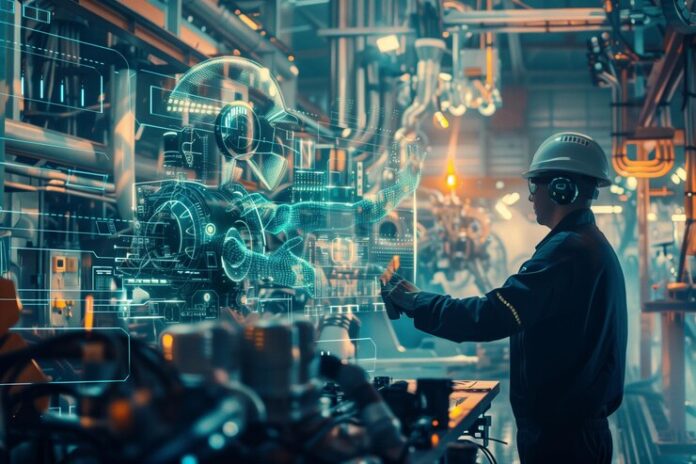In the bustling heart of manufacturing hubs worldwide, a silent revolution is underway, one that promises not just efficiency but also a profound transformation in the lives of those who work the assembly lines. It’s the Industrial Internet of Things (IIoT), a technological marvel that’s not just about machines talking to machines but about empowering people with insights, control, and safer work environments.
Empowering the Workforce:
For decades, factory workers have toiled amidst whirring machines and clanking gears, their tasks often repetitive and mundane. But with IIoT, they’re no longer mere cogs in the machine; they’re empowered operators, armed with real-time data and insights to optimize production processes. Sensors on equipment provide early warnings of potential malfunctions, allowing workers to intervene before a breakdown occurs. This not only minimizes downtime but also empowers employees with a sense of ownership over the production process.
Safety First:
In the industrial landscape, safety has always been paramount, but IIoT takes it to a whole new level. Smart sensors monitor environmental conditions and equipment performance in real-time, alerting workers to potential hazards before they escalate. From detecting leaks and emissions to ensuring compliance with safety protocols, IIoT is transforming factories into safer workplaces, where employees can focus on their tasks without constant fear of accidents.
Upskilling for the Future:
As factories embrace IIoT technologies, the skill sets required of the workforce are evolving. Workers are no longer just assembly line operators but data analysts, troubleshooters, and innovators. Companies are investing in training programs to upskill their employees, equipping them with the knowledge and expertise needed to leverage IIoT to its fullest potential. This not only enhances job satisfaction but also future-proofs the workforce against the ever-changing technological landscape.
Building Communities:
The impact of IIoT extends beyond the factory walls; it ripples through communities, creating economic opportunities and fostering innovation. As factories become more efficient and competitive, they create jobs and stimulate local economies. Moreover, the data generated by IIoT can be shared with suppliers and partners, enabling collaborative decision-making and driving collective growth.
Challenges and Opportunities:
Of course, the adoption of IIoT is not without its challenges. Concerns about data privacy, cybersecurity, and job displacement loom large. However, with proper regulations, training, and collaboration between industry stakeholders, these challenges can be overcome, paving the way for a future where humans and machines work hand in hand, creating value and driving progress.
In the grand tapestry of industrial evolution, IIoT is a thread that weaves together technology and humanity, transforming not just factories but also the lives of those who call them their workplace. As we march forward into this new era, let us remember that the true measure of progress lies not just in machines’ efficiency but in the empowerment and well-being of the people who operate them.




